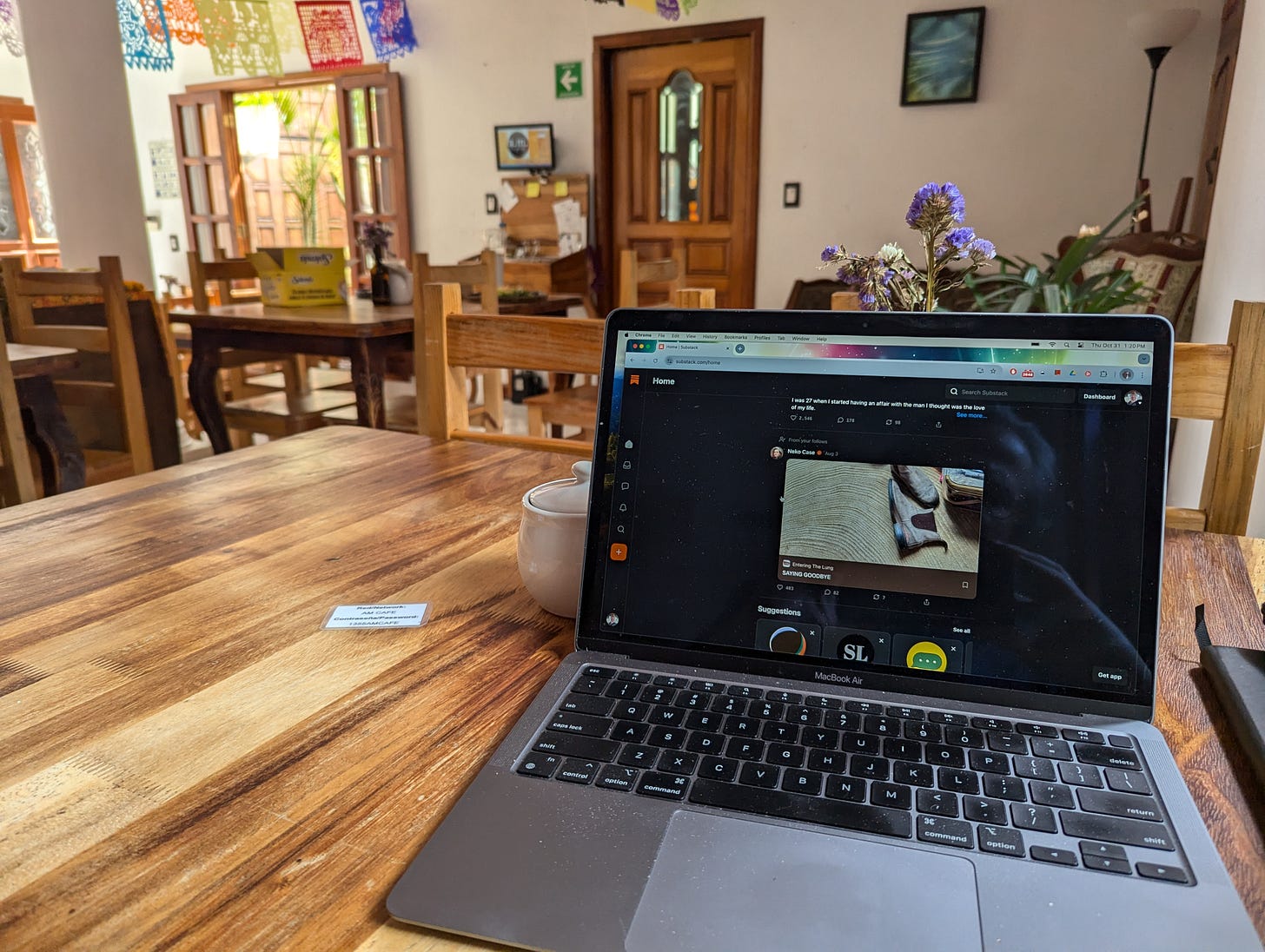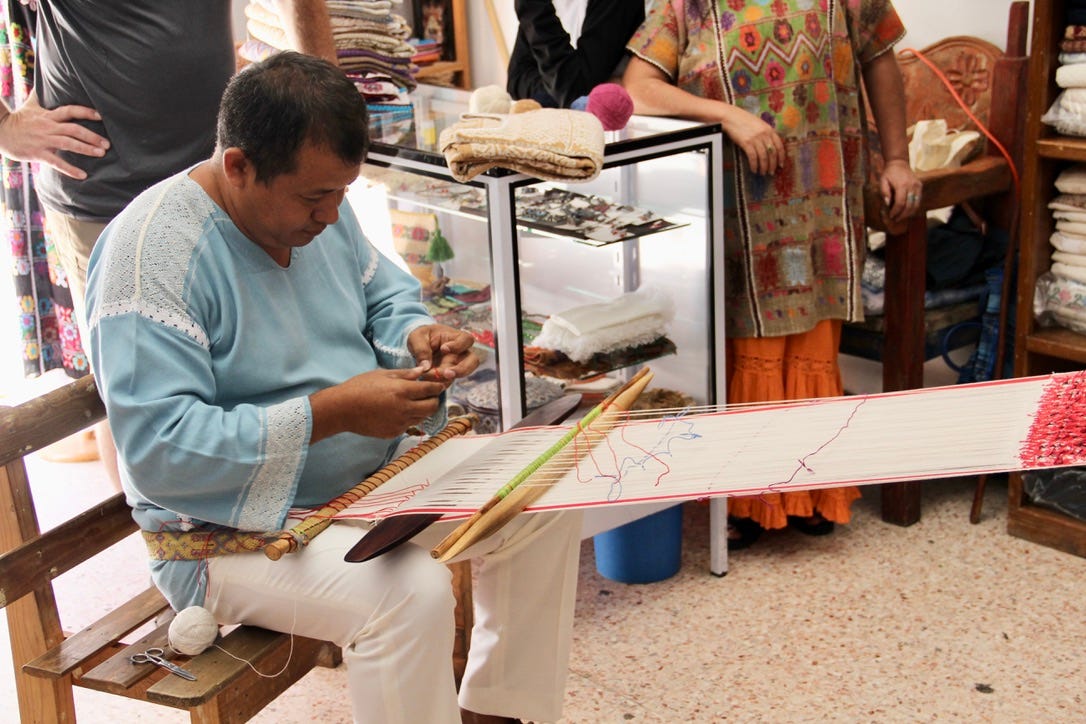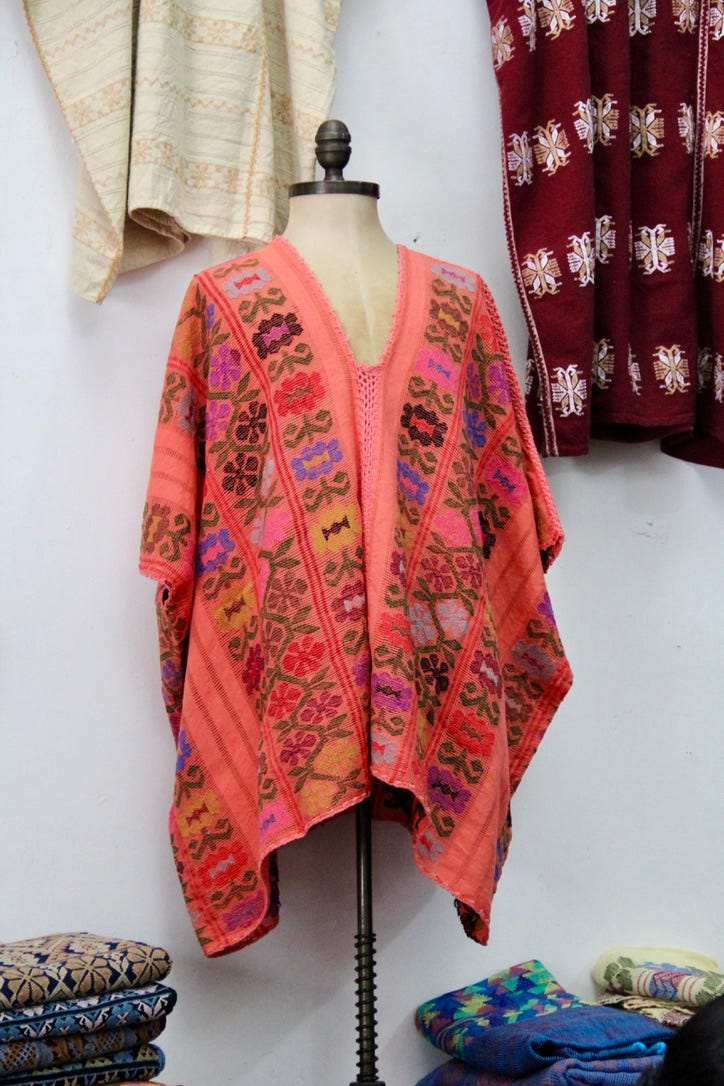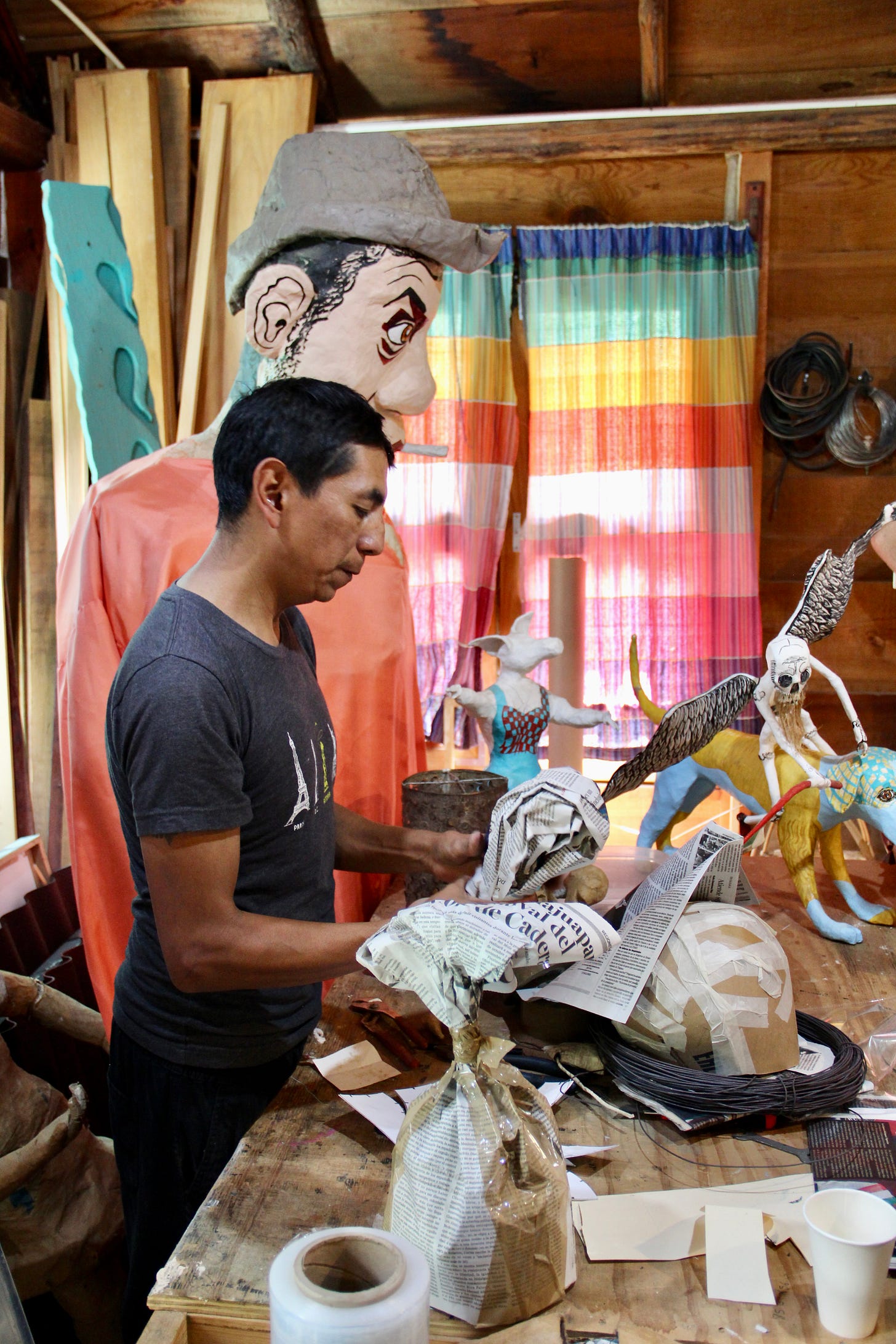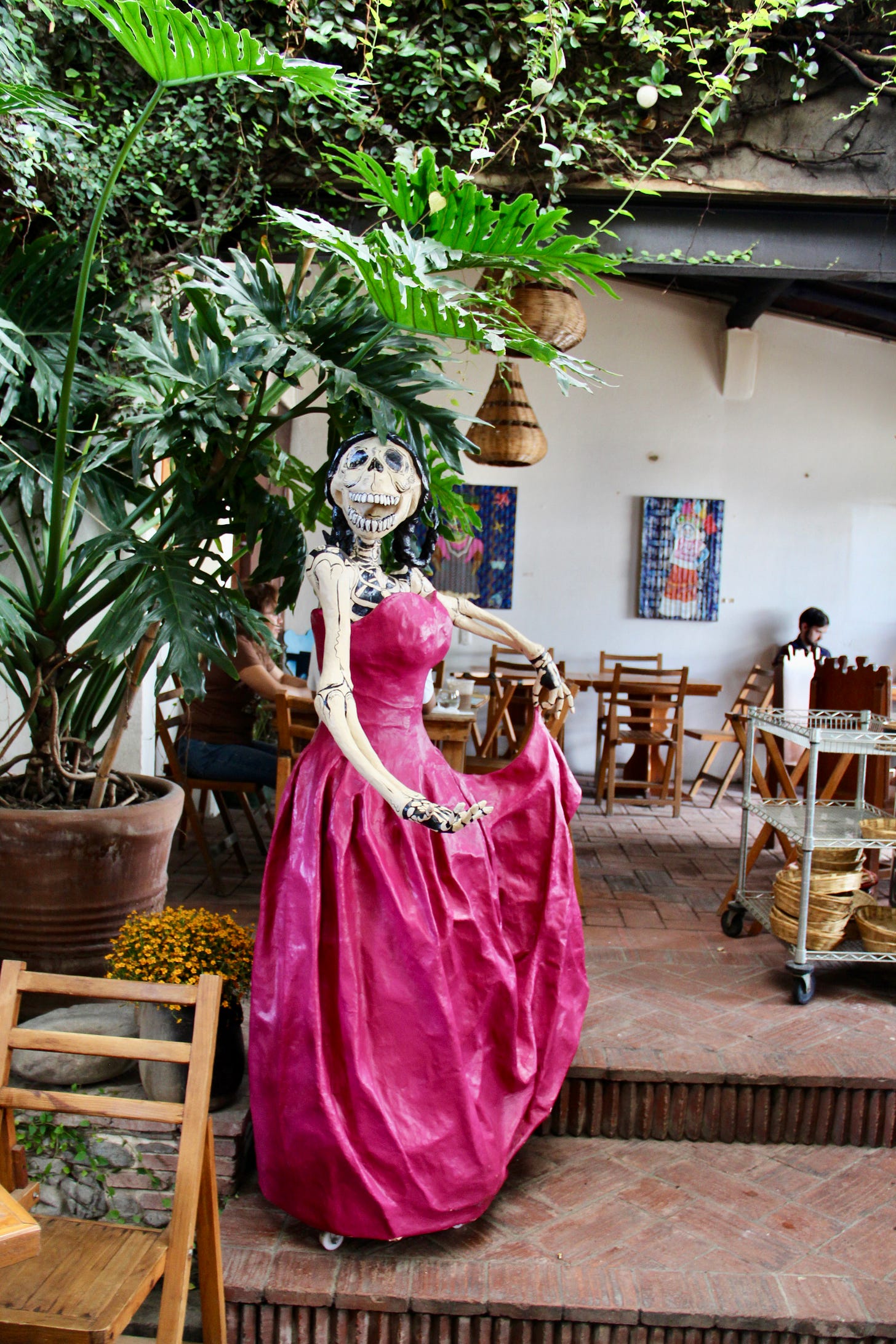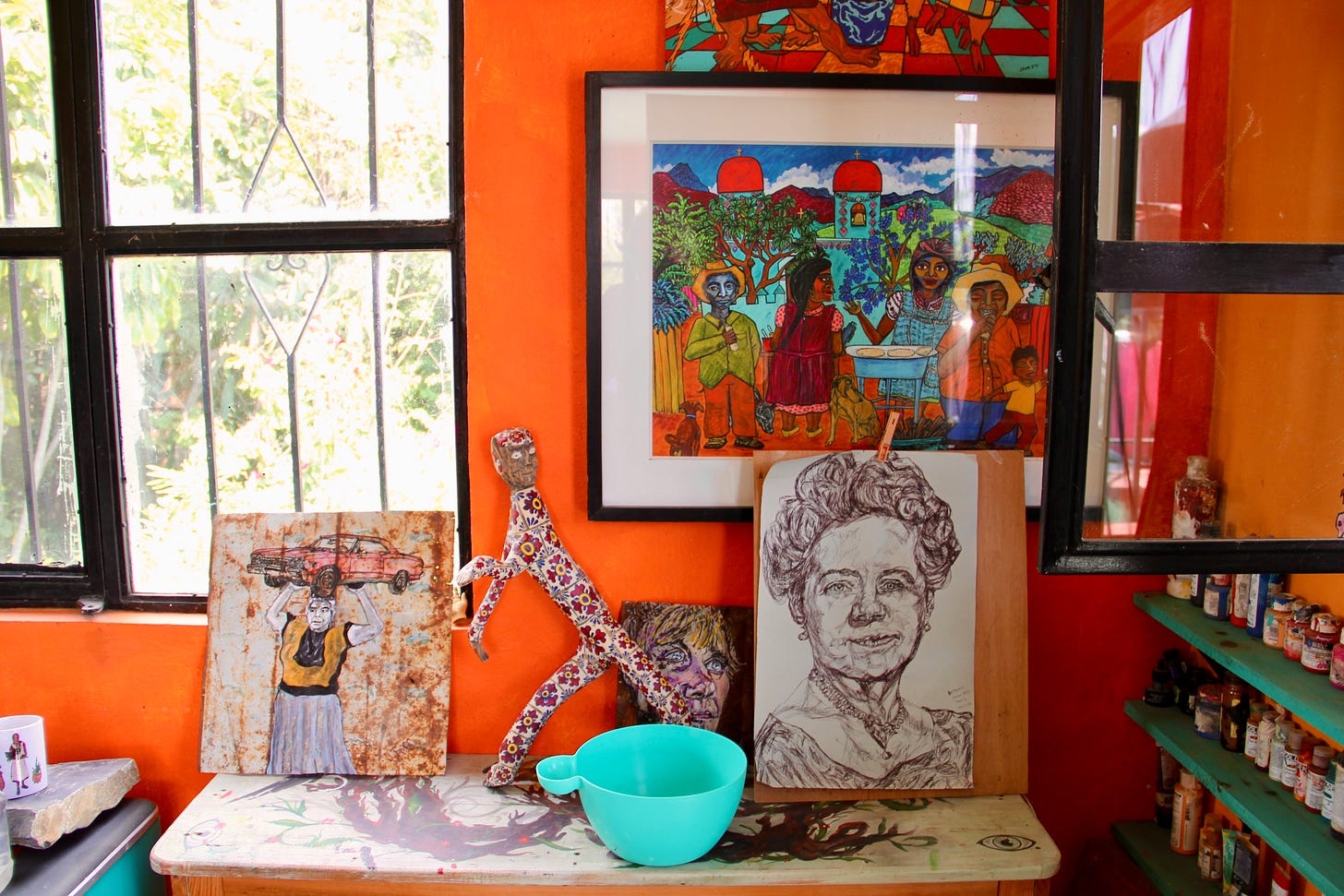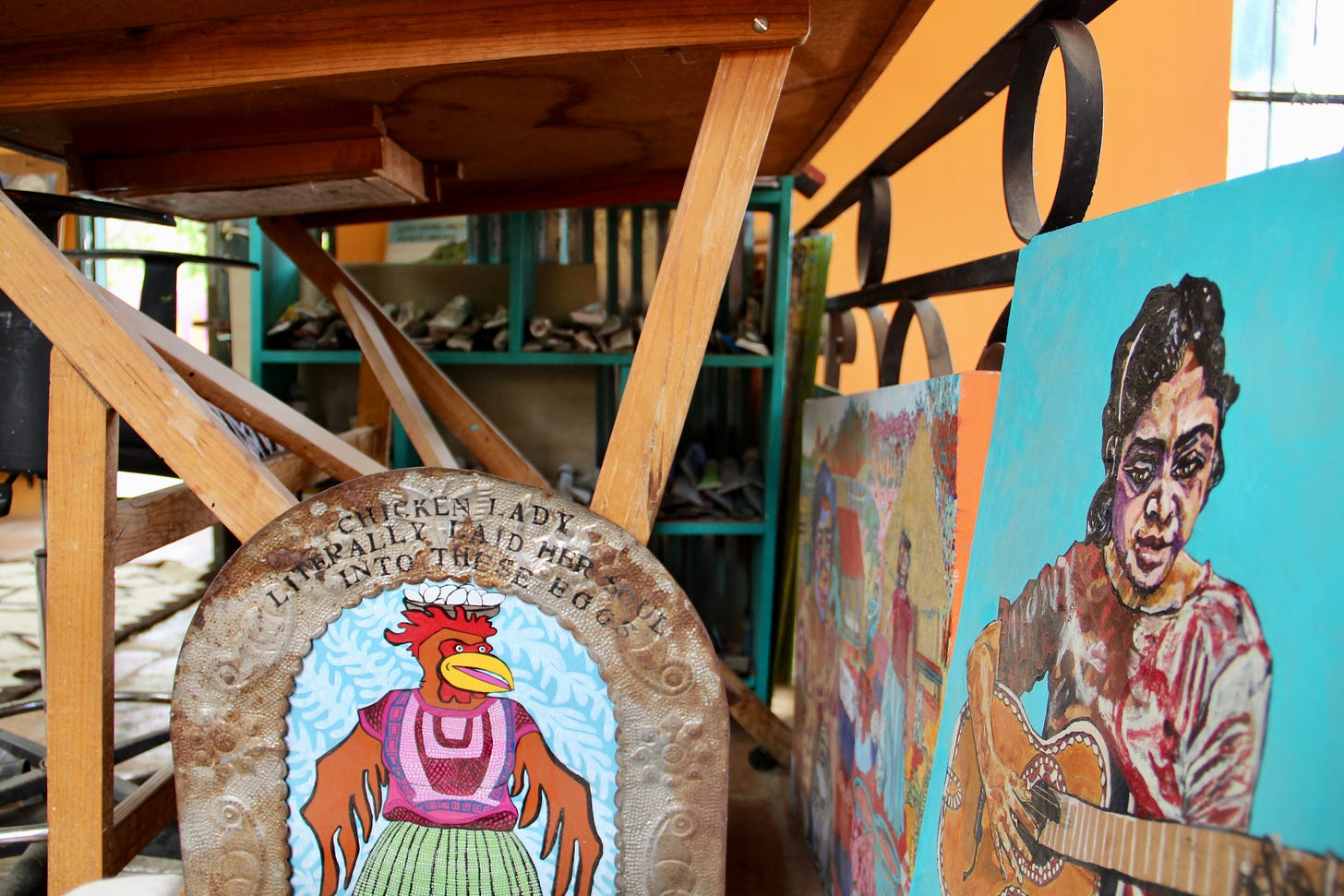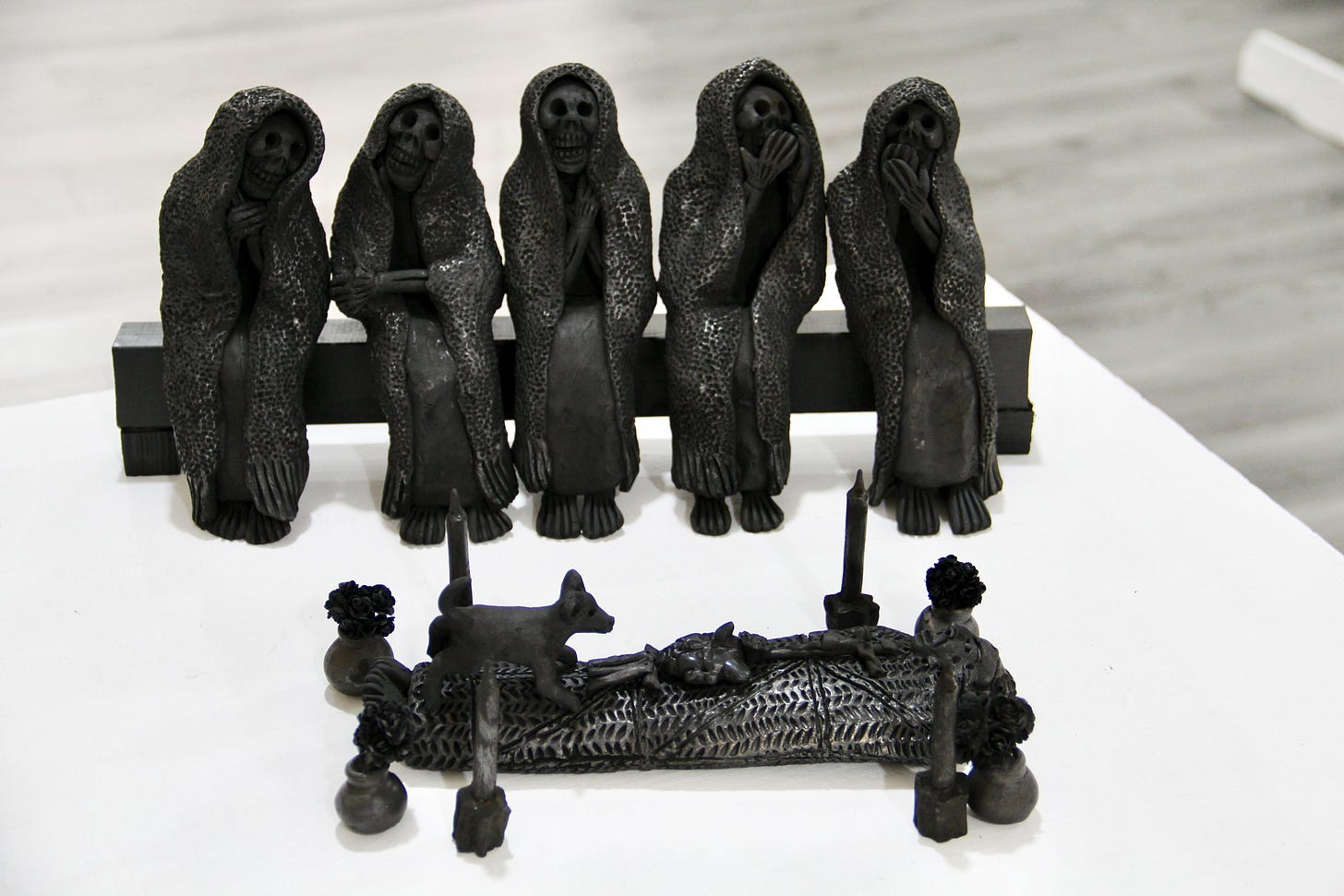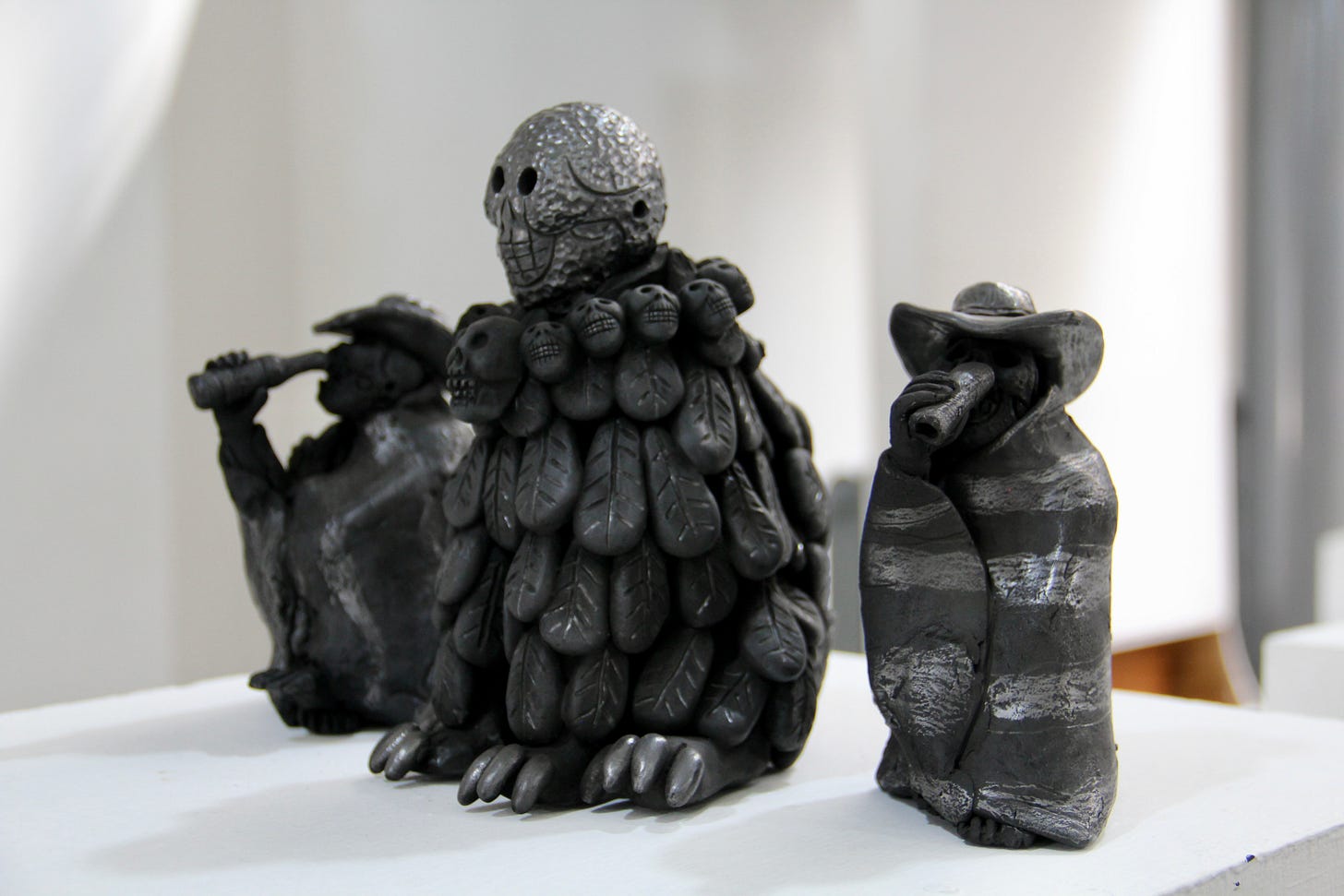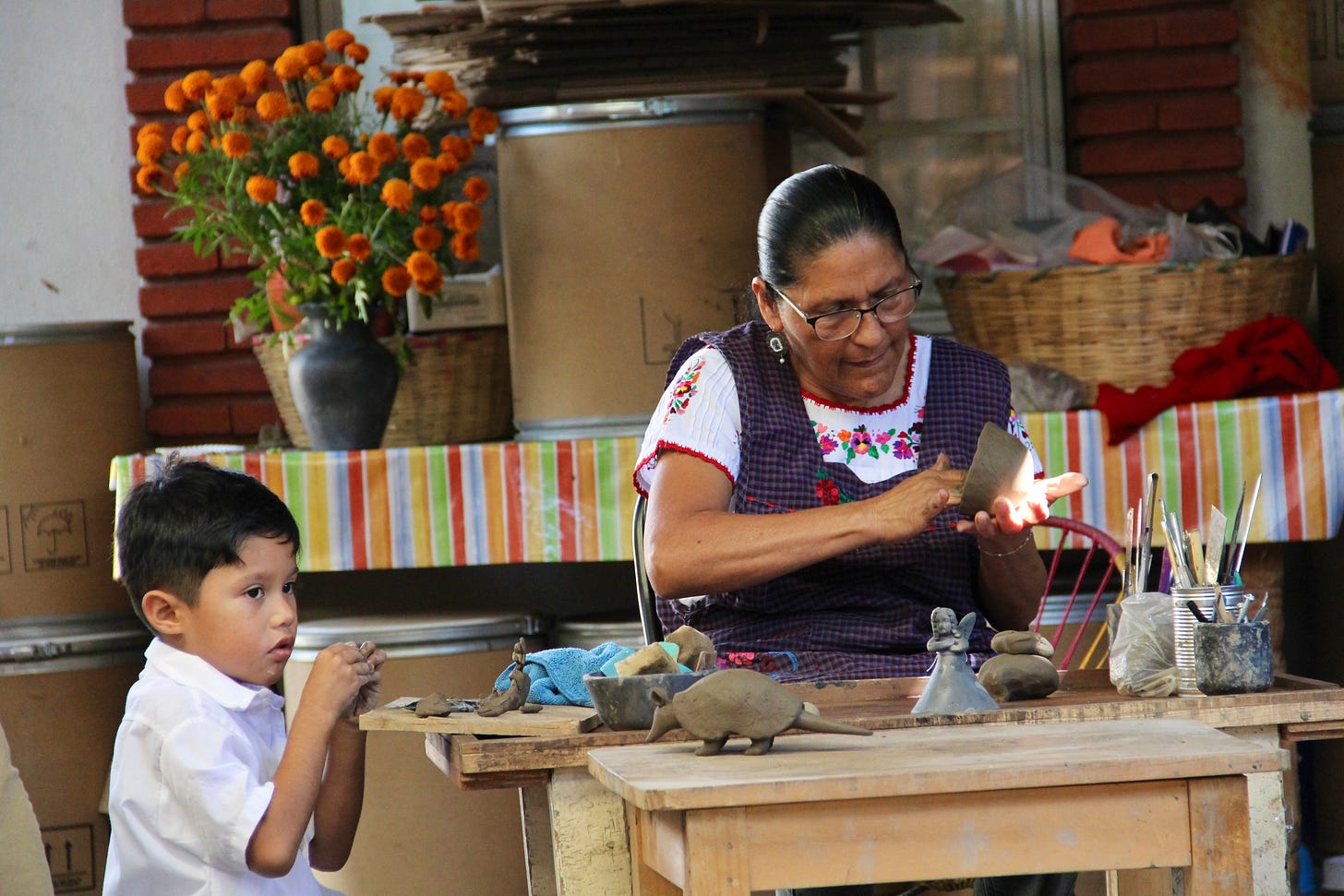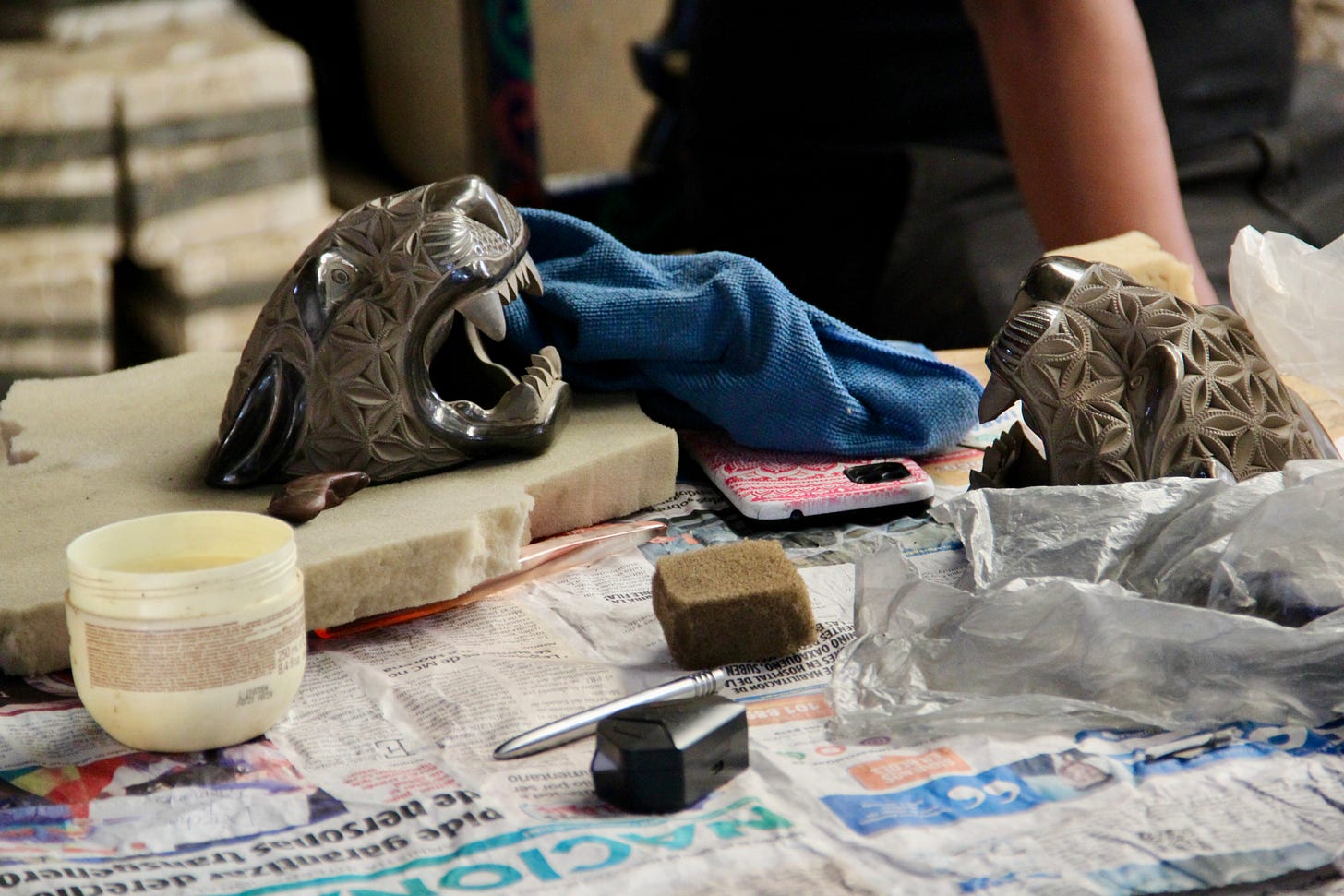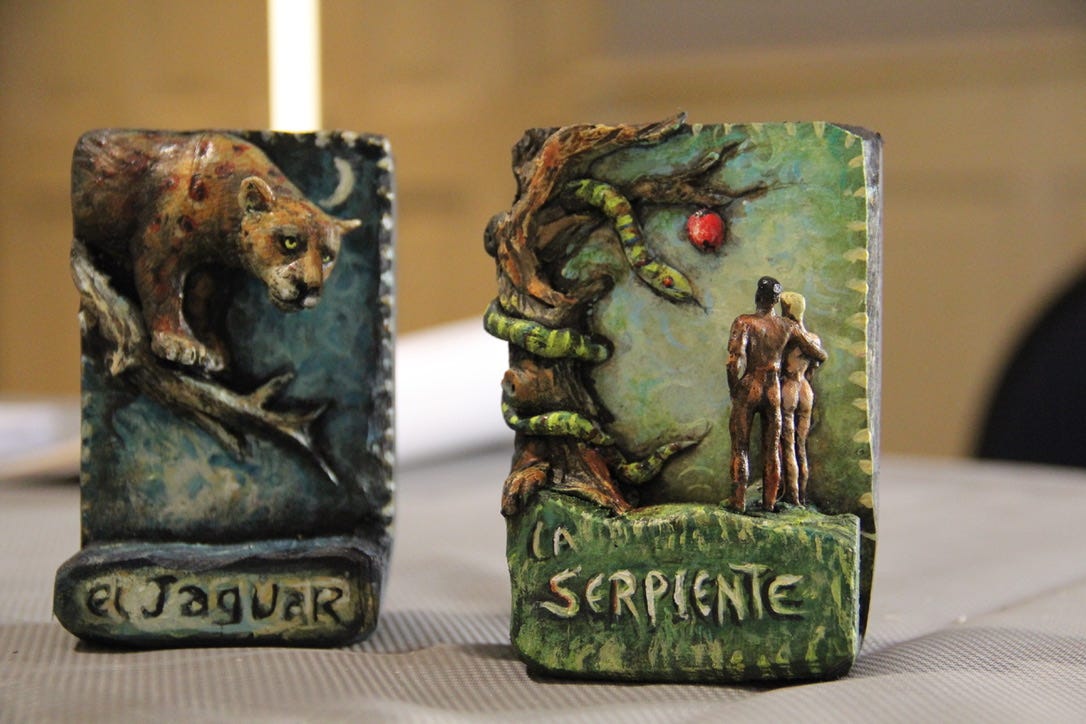Today is the third workshop day for the tour group. We spent the last two days visiting museums, and studios of working artists here in Oaxaca: an expat painter who moved here over twenty years ago and married an artist who builds monos de calenda, the giant papier-mâché puppets you see in the parades around town. We also visited a woman in San Bartolo Coyotepec, a master potter, whose family has been producing barro negro pottery and clay sculptures for generations. On Saturday, we visited the studio of an Amuzgo master weaver.
In all cases, we were gifted with an inside look at the life and work of Oaxacan artists. One of the truly inspiring things about being in Oaxaca is the great pride these master artists take in keeping these traditional art forms not just alive, but thriving, passing down through generations. The thing that has been blowing my mind and heart wide open, though, is the how very difficult and time-consuming the process of these art forms is.
One dress, woven by hand, can take up to four months for a master weaver to complete. Four months! Each dress is woven line by line, and the details are added thread by thread.
Coming from a world of mass production and instant gratification, where our the best measure of success as a consumer is how cheap we bought something for, this dedication to craft is mind-boggling. Sure, not everyone in Oaxaca is walking around in these meticulously crafted clothes, but many are.
The puppets that Chucho crafts for parades are mostly a labor of love. When he was a boy, he wished that someone crafted puppets small enough for children to carry and participate in parades. It was this boyhood dream that inspired him to start crafting puppets for children, and adults. He builds the puppets from bamboo the grove he and his wife planted in their yard, and papier-mâché. He uses newspaper and packing tape to form and fill the shape of the puppets. He developed his style for crafting the puppets on his own. He also creates papier-mâché sculptures.
Chucho builds the puppets, and his wife, Jean, an accomplished painter, paints them. They live together in a small village in Oaxaca. Of course, there is the mundane work of day to day living to attend to, but they are both working artists.
Barro negro pottery is a style of clay sculpture and pottery that is only produced in the village of San Bartolo Coyotepec. There is a mine in the foothills where the community gathers the clay for the pottery. There is a very specific way that the pottery is fired that produces its characteristic black sheen.
We had the privilege of visiting the home of Adelina Pedro Martinez, a master potter. She is the fifth of seven children who are all masters of barro negro pottery. It’s an art form that is traditionally passed down by the mother. In their case, it was their father who taught them the craft.
He insisted that each of his children develop their own style, refusing to copy even their siblings. He felt it was important for each of them to make their own mistakes and learn from them, rather than learning to make others’ mistakes. We had seen some of her brother’s work in the Museo Estatal de Arte Popular de Oaxaca earlier that day.
While she told us her story, she crafted a bell in the shape of an angel from the clay. Her grandson sat next to her, crafting a sculpture of his own. One of her daughters sat amongst us, burnishing one of the many sculpted jaguar skulls, preparing it to be fired.
Work is work.
Inspired doesn’t begin to describe how I’m feeling halfway into this tour. While the main purpose of the tour is the workshop, where artists are spending four days working with Michael deMeng, learning painting techniques and assembly strategies to create assemblage art, these “enrichment excursions” where we’ve had the opportunity to witness the lives of working artists in Oaxaca has been an incredible and enlightening experience.
During the workshops, my job is to photograph artists in their process of creation. During the excursions, my job has been to tell the story of our collective experience. In both cases, I am immersed in the act and experience of creation. It’s made me think a lot about what work is, and what we make of it back in the “real world.”
When I think about the 4 months of labor it takes to create a single dress, weaving it thread by single thin thread, my mind can hardly wrap around it. When I look at the meticulous work required to shape and carve those jaguar skulls from clay, consider the time it takes between each phase of production, waiting for the clay to dry enough to do the carving, waiting again to burnish it to shining before firing it, I can only marvel.
When I think about the hours I “worked” in retail bookstores, dusting shelves, shelving books, working the cash register, it fills me with a deep sense of regret for all those hours of my life wasted.
I can try to convince myself that I played a valuable role in the art of literature and literacy, but when you consider that the author of a book that retails for $25 makes about $0.50 per book sold, the illusion of the glory of working in a bookstore quickly diminishes to capitalist exploitation.
When I consider the pursuit of happiness, what that looks like in action, I can’t help but feel it looks more like passing a ball of cotton thread between long strands of thread than operating a cash register. It looks more like a parade of children in costumes dancing amongst child-sized monos de calenda to music played by their classmates.
We do what we have to do to survive in a capitalist society. We work in jobs to earn the money to pay for our basic needs, and hopefully do the things we love to do in our free time. If we have any free time.
It may seem naive to glamorize the lifestyle of an artist, especially from a capitalistic perspective, where money is how we measure our success, and spending it on stuff is how we express our happiness. I’ve been living outside the system for over a year now. As I work to create a way of life that feels worth living, a life in pursuit of happiness, these artists’ lives ignite my imagination with possibility.
Work is necessary. It doesn’t have to be a dirty word.
Hasta luego.


